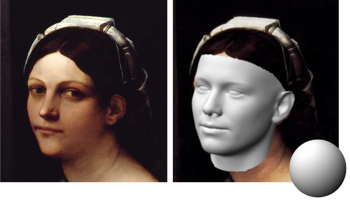
Light is abstract. Light is difficult to describe with words. Unlike other pictorial motifs such as perspective, light depiction eludes fixed rules and defies straightforward measurement. This study presents a preliminary step towards measuring light infor- mation from paintings at scale. We use spherical harmonics to extract light environment features from depicted faces. Our initial evaluation assessed the model’s ability to accurately represent environmental lighting, using natural images with ground truth lighting information. To evaluate performance on paintings on a large-scale setting, we compare our light direction estimates with human annotations over the course of five centuries. Finally, our methodology undergoes validation through an art historical case study. We track the use of diffuse light across seventeenth- century Netherlandish portrait painting to commensurate art his- torical literature with our quantitative measures.

Can artists be recognized from the way they render certain materials, such as fabric, skin, or hair? In this paper, we study this problem with a focus on recognizing works by Rembrandt, Van Dyck, and other Dutch and Flemish artists from the same era. This paper proposes a novel material-based approach based on Swin Transformer and Cascade Mask R-CNN to address artist recognition task. We report the performance on a dataset of 644 images. Additionally, the models robustness to image variations is studied.